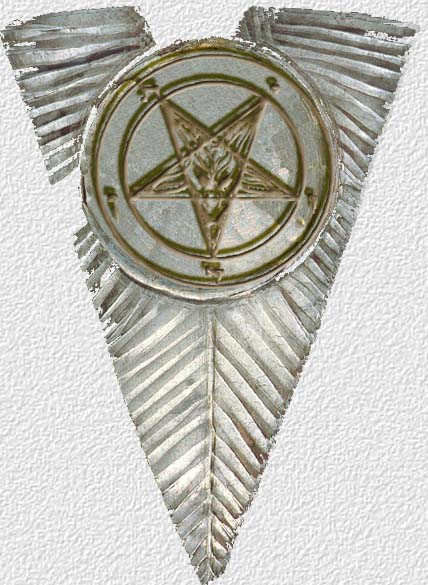
Chaos Magic and Satanism
https://www.dpjs.co.uk/chaos.html
By Vexen Crabtree 2010
“Chaos magic first surfaced during the early 1970's in the form of a loose confederation known as the Illuminates of Thanateros, though it wasn't until the 1980's that it became a dominant thread in occultism. Advocates of this system (or 'absence of system', according to adherents) proclaim that the practitioner can invoke any tradition of gods, demons, angels or symbols - even those derived from fiction - as their personal meaning, rather than literal existence, is vital in achieving the individual's aims. This imaginative freedom has created more crossover between Satanism and chaos magic than any other area of the occult.”
"Lucifer Rising" by Gavin Baddeley (1999)1
This accords with the Left Hand Path, where personal effort and private thought are more powerful than relying on external intangibles like gods or tooth fairies. When you find that one of the The Satanic Rituals2 is based on the Cthulu myths (Lovecraft fiction), it is deeper than just using the symbols and power of the Lovecraft demons, it is also a valid application of Chaos Magic.
Chaos theory holds that no system can be universal, nothing can be constant, no power shows itself in the same way more than once, and that ultimately every symbol and event has a different relationship to every person who contacts it. This is because events that follow on from their causes are highly sensitive to the starting conditions; in other words, when people enter a ritual chamber or engage in magical behaviour, they will never be in the same emotional states as on previous occasions, so, the results will always be variable. Every event in our lives changes the neurological biology that sits behind our consciousness; our minds are a constantly changing storm. Each magical practice must be changed, altered and differed according to the states of mind of the participants at that time. Chaos, then, is the order of the day. The stricter the system, the worse the results! The better the results, the more the event was tailored for the individuals during it.
“Over the last twenty years, it has become a commonplace assumption of symbolic anthropology that the meanings of symbols are not exhausted by their shared or public elements, but are essentially a matter of private interpretation and, as such, may be inaccessible to others (including, alas, to ethnographers). Metaphor is public in so far as its terms are culturally salient and compelling; but its meaning to the different individuals who are oriented to it may be utterly different.3
This depiction of metaphor is very close in meaning to Edelman's definition of qualia. Although we may all see the colour red, or hear the word 'food', what we see and what we hear will be unique to each of us. [...] Even concepts, moral judgements or other symbolic representations of the material or social world will vary in meaning between individuals.”
"Chaos and Intoxication" by Alan Dean (1997)4
The power of the symbol is only present in relation to the opinions of the viewer. No symbol is universally good, universally bad or even "mostly" one of the other. The most sensible approach is that of the left hand path, where every individual uses the symbols that represent what he thinks they do, and uses them according to his needs. The power of symbol lies in the will of the user, not in the power attributed to the symbol by other people.
Finally, the researcher Dave Evans says that there are more chaos magicians in the UK than Satanists, but there is some obvious crossover between the two sets of people - and - that there are still not many chaotes (he suspects there are more researching investigating them than there are practitioners!).5